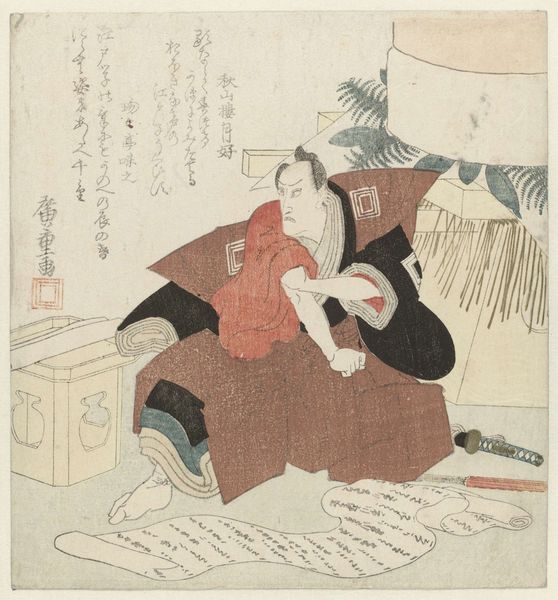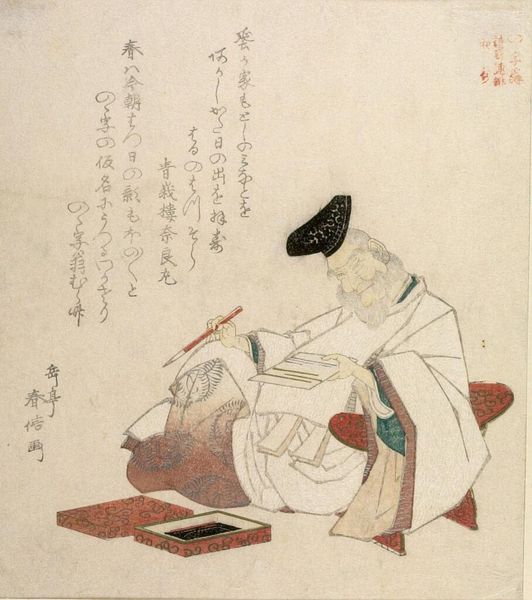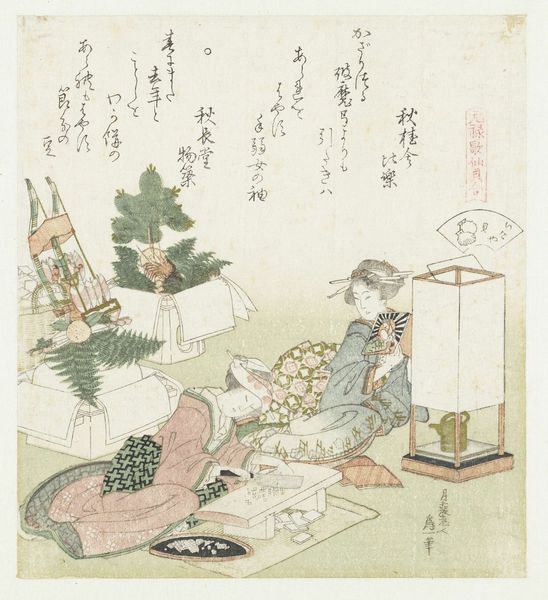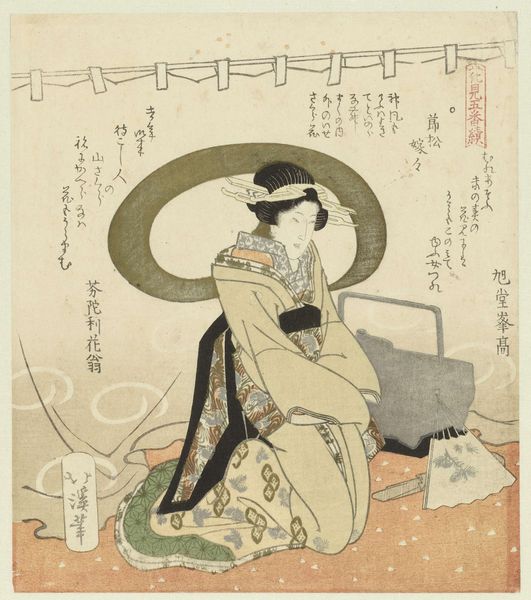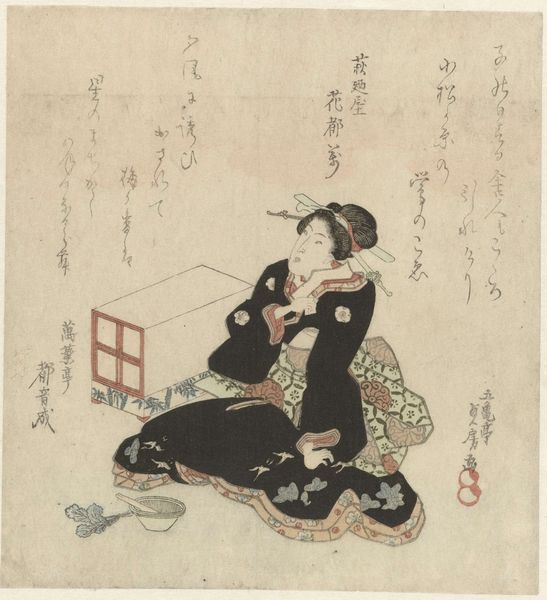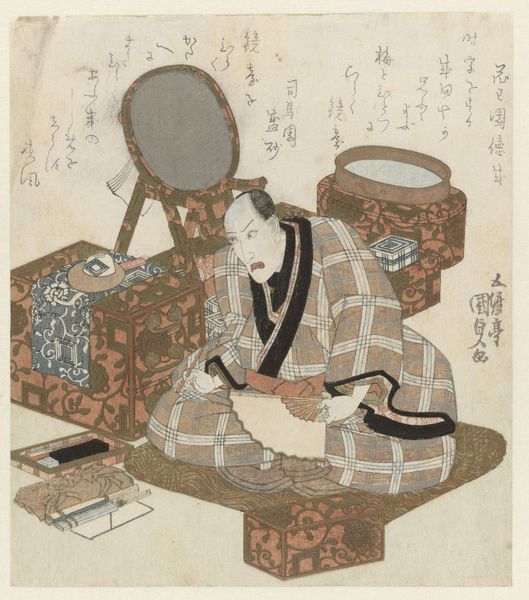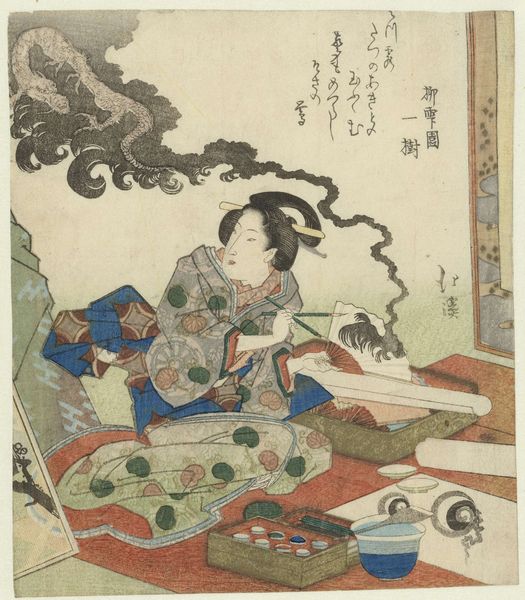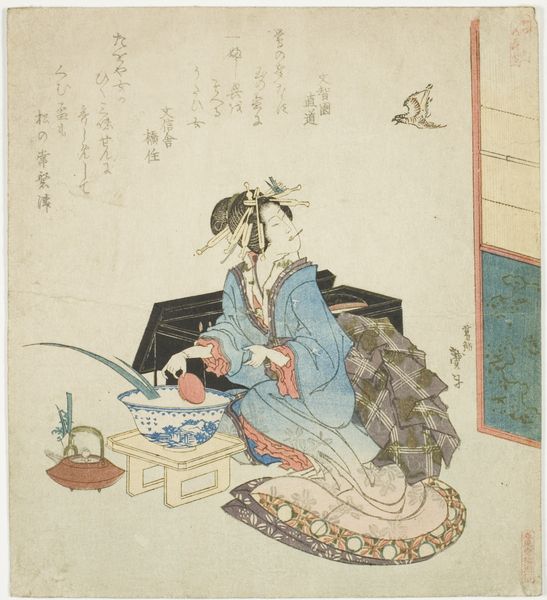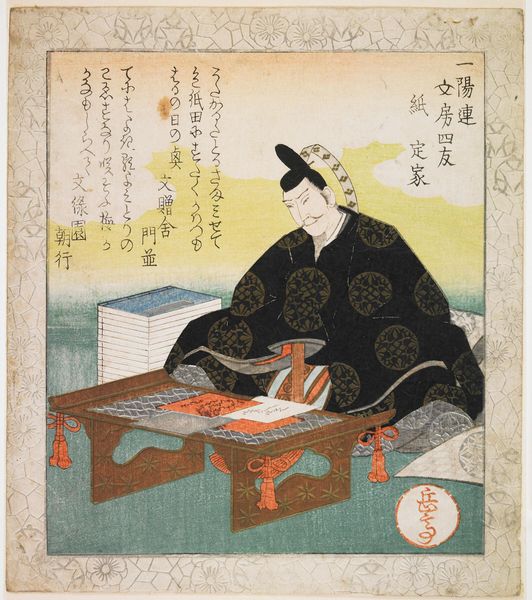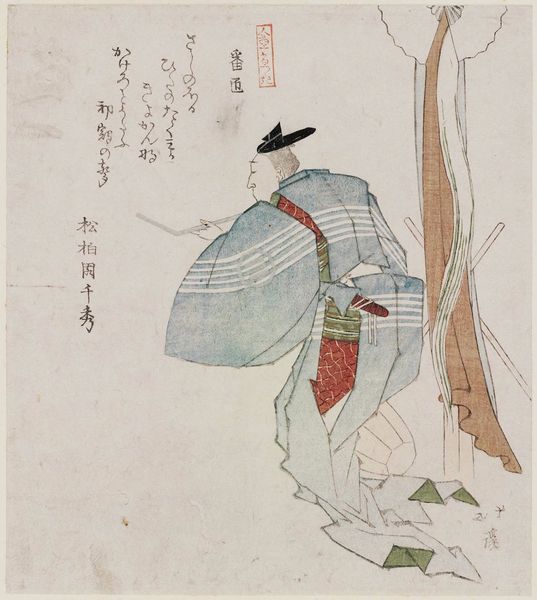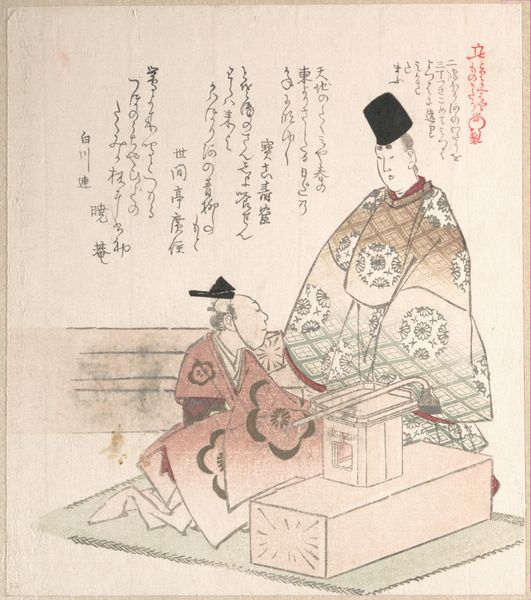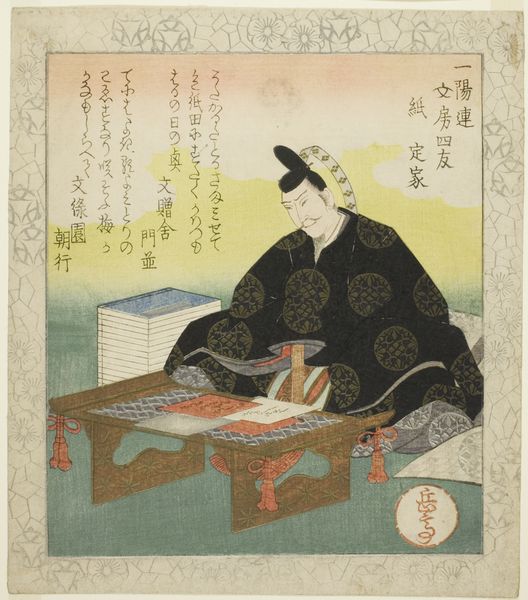
Toothbrush Seller, from the series Ten Kinds of People (Jinbutsu jûban tsuzuki)
0:00
0:00
print, woodblock-print
#
portrait
# print
#
asian-art
#
ukiyo-e
#
figuration
#
woodblock-print
#
genre-painting
Copyright: Public domain
Editor: We’re looking at "Toothbrush Seller" by Toyota Hokkei, from the series Ten Kinds of People. It’s a woodblock print, very much in the Ukiyo-e style. The woman seems almost cramped within the frame, surrounded by objects. How do you interpret this work, particularly in the context of its series? Curator: Hokkei’s print operates within a very specific economy of images and social commentary. Ukiyo-e, meaning "pictures of the floating world," often depicted everyday life and popular culture. However, they also served as a commentary on social status. This print seems less about the individual woman and more about the commercial activities tolerated for certain social classes in Japanese society. Who do you think his audience might be? Editor: Wealthier people, perhaps? Those who weren’t selling toothbrushes themselves. Curator: Exactly. These prints weren't simply documentation; they actively participated in the construction of social identities. By depicting this woman and her trade, Hokkei is addressing a particular gaze, framing her as 'other' to his probable upper class audience, subtly enforcing their societal roles, and, perhaps, mocking her lowly existence through a carefully considered composition. Notice also how her posture appears withdrawn. Do you consider her environment busy or quiet? Editor: Very busy! It all adds to the feeling of commercial activity crowding in on her. I didn’t realize there was so much more going on behind the picture’s pretty surface! Curator: And that awareness enriches the appreciation, yes? By recognizing the historical and social layers embedded within the visual representation, it permits a more detailed assessment of its purpose and impact.
Comments
No comments
Be the first to comment and join the conversation on the ultimate creative platform.
